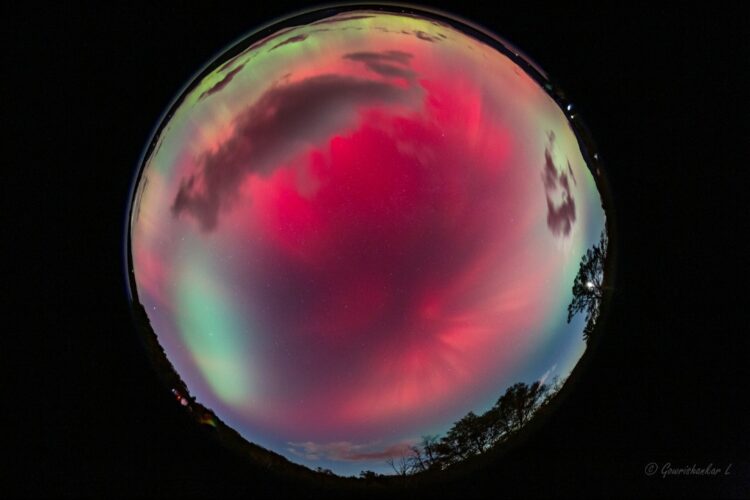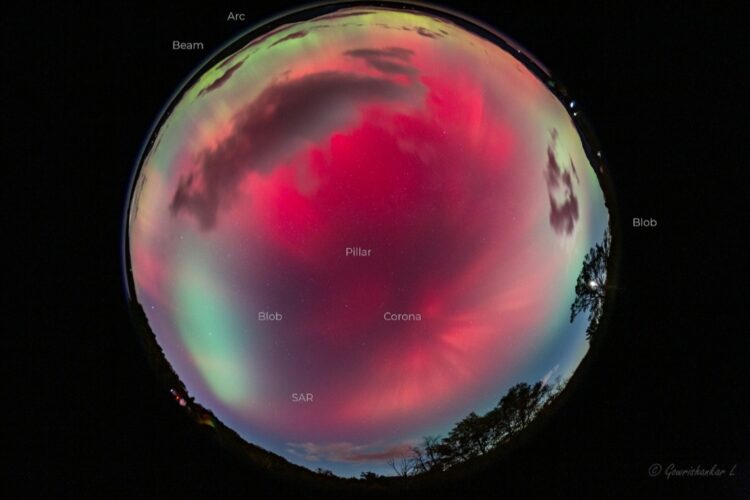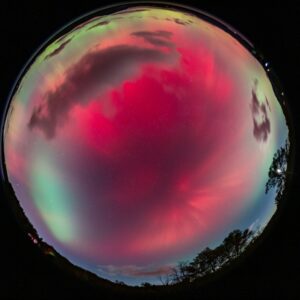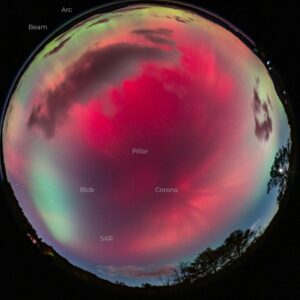Different Types of Aurora During G4 Storm
Description
From the photographer: “I was lucky to capture all the different types of Aurora that showed up in a single frame of my fisheye lens pointed vertically up. This happened around 10:20 pm ET, when the peak of substorm was unfolding. Swipe to see all the different one exhibited here. I’m particularly mesmerized by the BLOB. Never have seen them before and they were mysteriously moving all over the place!
Arcs: Auroral arcs are not the most exciting type of aurora. That’s because they are constrained to the northern horizon and don’t show very much movement. But when you see an arc start to brighten, that usually means that a substorm is imminent.
Beam: Auroral beams are vertical lines of color. They are often seen reaching upward out of auroral arcs.
Pillars: In mid-latitudes, aurora pillars are most common. During a substorm, they can quickly rise up from the north and drift across the horizon. Usually, they are green at the base and topped with red or purple.
Corona: Coronas are the most spectacular form of aurora. It appears directly overhead. Rays, pillars, and pulses rise up from every horizon like a flame, converging at the zenith
Blob: They are called ‘proton auroras,’ and they come from Earth’s ring current system. Most people don’t realize that Earth has rings. Unlike Saturn’s rings, which are vast disks of glittering ice, Earth’s rings are invisible to the naked eye. They are made of electricity–a donut-shaped circuit carrying millions of amps around our planet. The ring current skims the orbits of geosynchronous satellites and plays a huge role in determining the severity of geomagnetic storms. Sometimes during strong geomagnetic storms, protons rain down from the ring system, causing a secondary shower of electrons, which strike the atmosphere and make auroras. Earth-orbiting satellites have actually seen these protons on their way down. Ordinary auroras, on the other hand, are caused by particles from more distant parts of Earth’s magnetosphere and have nothing to do with Earth’s ring current.
SAR: They are pure red arcs of light that ripple across the sky during strong geomagnetic storms. SARs may look like auroras, but they are not the same. Auroras appear when charged particles rain down from space, hitting the atmosphere and causing it to glow like the picture tube of an old color TV. SARs form differently. They are a sign of heat energy leaking into the upper atmosphere from Earth’s ring current system.”
Technical details:
Single-Exposure
Canon EOS 5D Mark III, Canon EF 8-14mm F4 Fisheye Lens, 8mm, ISO 1600, Exp.: 10 sec.




comments (0)